BE54 Five Function Hospital Electric Beds
Hospital electric beds are sophisticated pieces of medical equipment integral to patient care in healthcare settings. They are designed to enhance patient comfort and aid medical staff by offering electrically powered adjustments for bed height, head, and foot sections. These beds are often equipped with features like lockable caster wheels for ease of transport, side rails for patient safety, and central locking systems for stability. With the touch of a button, caregivers can achieve the precise positioning needed for various medical procedures or to improve patient comfort. Additionally, these beds may include emergency features like a quick-release CPR function and are constructed from durable, easy-to-clean materials to meet hospital hygiene standards, all of which contribute to an efficient, safe, and patient-centered healthcare experience.
Technical Parameter:
| External Length | 2190mm |
| External Width | 1020mm |
| Bed Height Min | 455mm |
| Bed Height Max | 745mm |
| Mattress Platform | 1925*900mm |
| Safe Working Load | 250kg |
| Back-rest | 75°±10° |
| Knee-rest | 35°±10° |
| Trendelenburg | 12°±3° |
| Reverse Trendelenburg | 12°±3° |
Technical Configuration:
| Linear Motor | 4pcs |
| 5” Double-Side Caster | 4pcs |
| Central Locking Pedal | 2pcs |
| ABS Bed Ends with Safe Lock | 1set |
| PP Foldable Side Rail | 1set |
| IV Pole | 1pc |
| IV Pole Prevision | 4pcs |
| Drainage hook | 2pcs |
| Front and Back Tilt Angle Display | 4pcs |
| Bumper Wheel | 4pcs |
| Hand Controller | 1pc |
| Manual CPR | |
| Electric CPR |
Optional:
- Back-up Battery
- Bed Extension
- Nurse Controller
- Auto-regression Function
- Night Light
- Monkey Pole
Product Introduction:
Technology
Hospital electric beds rely on advanced technology to enhance patient comfort, safety, and usability. First, the beds use precision welding, such as 360° seamless robotic welding, to create strong and smooth connections. This ensures durability and prevents any weak points. Next, powder coating technology makes the bed surfaces smooth, heat-resistant, and corrosion-proof. Moreover, the coating improves the bed’s visual appeal. As a result, these technological features contribute to both the safety and aesthetic quality of the beds, making them well-suited for hospital settings.
Safety Standard
Hospital electric beds are built to meet strict safety standards. They comply with ISO 13485:2016 and ISO 9001:2015, which ensures that the design and manufacturing processes are safe for medical use. The CE marking further guarantees that the beds meet the European Union’s health, safety, and environmental regulations. These certifications highlight the bed’s reliability and patient safety. Additionally, manufacturers maintain high levels of risk management and undergo rigorous quality control testing. Consequently, these processes protect both patients and healthcare staff in medical environments.
Platform
The platform of hospital electric beds is divided into four sections: backrest, thigh rest, lower leg rest, and buttock rest. This segmented design allows independent adjustments, making the bed adaptable for various medical needs. Moreover, ventilation holes on the platform promote airflow, reducing the risk of pressure ulcers. The smooth surface of the platform is free of any protrusions or gaps, enhancing safety and hygiene. This thoughtful construction meets both functional and aesthetic needs in healthcare settings.
ABS Bed End With Safe Lock
The ABS bed ends are crafted from durable, heat-resistant materials. Advanced injection molding ensures a sleek and strong finish. This makes the bed ends easy to clean and resistant to chemicals. Also, the bed ends are detachable, allowing for quick removal in emergencies. This feature ensures rapid medical intervention when needed, further supporting patient safety.
PP Side Rail
Hospital electric beds come equipped with PP side rails, made from heat-resistant and corrosion-proof polypropylene. These rails are designed with safety in mind, featuring anti-trap mechanisms to prevent injuries. Furthermore, a damping system allows the rails to lower quietly and smoothly, minimizing disturbances. An embedded angle indicator helps staff easily monitor the bed’s angle, ensuring the bed is set correctly for medical treatments.
Trendelenburg/Reverse Trendelenburg
The Trendelenburg and Reverse Trendelenburg functions on hospital electric beds allow for precise positioning. These features tilt the bed up to 12°±3°, helping with venous return, drainage, and respiratory issues. These adjustments are vital in certain surgical procedures and recovery stages. Moreover, motorized controls make the tilting process smooth and safe, providing both comfort and therapeutic benefits to the patient.
Back Section Adjustment
The back section of hospital electric beds can be adjusted to an angle of up to 75°±10°. This flexibility is crucial for patients who need to elevate their upper body for medical reasons such as breathing or digestion. The motorized system ensures smooth and quiet adjustments, allowing for comfort without disturbing the patient. Such adjustability enhances recovery and comfort.
Leg Section Adjustment
The leg section of hospital electric beds can be adjusted up to 35°±10°. This function helps improve circulation, reduces swelling, and provides ergonomic support. By adjusting the legs, patients can achieve a comfortable position for various activities. The smooth motorized adjustment ensures patient comfort while minimizing disturbances.
Whole Bed Height Adjustment
Hospital electric beds allow height adjustment between 455mm and 745mm. This feature helps both patients and caregivers. Lowering the bed helps patients get in and out easily, reducing the risk of falls. Meanwhile, raising the bed allows caregivers to work at an ergonomic height, preventing strain. The motorized system ensures smooth height changes without disturbing the patient.
Caster
Casters on hospital electric beds make movement and positioning easy. These 5-inch twin-wheel casters resist corrosion and wear, ensuring long-lasting performance. Their anti-winding design prevents cords from tangling. Even after repeated use, the casters remain functional and durable, allowing smooth transport and secure locking of the bed.
CPR
The CPR function on hospital electric beds is essential for emergencies. It allows the bed to flatten instantly for CPR by pressing a button or releasing a lever. This feature ensures that healthcare providers can respond quickly in critical moments. The rapid flattening of the bed improves the chances of a successful resuscitation.
Bumper Wheel
Bumper wheels are installed at each corner of hospital electric beds. These bumpers protect the bed, hospital walls, and doorways from damage during movement. They absorb shock, reducing impact in case of collisions. As a result, bumper wheels contribute to a safer experience for patients and protect hospital infrastructure.
Linear Motor
Hospital electric beds use a linear motor system that operates quietly at 50dB, ensuring a calm environment for patient recovery. These motors are durable, rated for up to 20,000 cycles. This high level of reliability ensures that the beds remain functional even with frequent adjustments. The motorized system enables smooth, efficient position changes, improving both patient comfort and caregiver efficiency.
Angle Indicator
Angle indicators built into the side rails help healthcare staff monitor bed positioning. These indicators allow for precise angle adjustments, essential for treatments that require specific positioning. The indicators are easy to see, making it simple to confirm the bed’s angle. So, this feature ensures consistency in patient care and enhances treatment accuracy.
Central Locking Pedal
The central locking pedal system on hospital electric beds ensures easy mobility and stability. By pressing the pedal, caregivers can quickly lock or unlock the casters, securing the bed in place or allowing movement. This system is simple to use and speeds up bed positioning in fast-paced environments, improving both patient and staff safety.
IV Pole&IV Pole Prevision
The IV pole on hospital electric beds is made from stainless steel and includes four hooks for multiple IV lines. Adjustable in height, the IV pole ensures flexibility in administering fluids. Each corner of the bed has an IV pole socket, allowing for convenient placement depending on the medical scenario. This versatile design supports efficient patient care.
Hand Controller
The hand controller for hospital electric beds is user-friendly, allowing healthcare providers or patients to adjust the bed’s settings easily. The controller manages various functions like back and leg positioning, height adjustment, and emergency CPR positioning. Tethered by a flexible cord, it remains within easy reach for quick adjustments. This intuitive design ensures patient comfort and safety.
CENTRAL LOCKING PEDAL
There is a pedal on both sides of the end of the bed, when the inside of the pedal is down and the outside is up, the bed can be freely promoted, and when the outside side of the pedal is pressed down, the bed is locked in place. Effective control of bed fixation and transfer. So, the integrated design is very convenient.
PP SIDE RAIL
PP material, heat and corrosion resistance. With anti-jamming design to prevent any part of the body from getting stuck. Damped descent does not cause accidental injury. Moreover, with built-in angler.
ABS FOLDABLE BED END
ABS material, heat and corrosion resistance. Disposable injection molding technology, beautiful and durable. Removable to respond to medical emergencies and protect patient safety.
CASTER
5 “double-sided casters with anti-winding design. Moreover, the casters are made of corrosion-resistant and wear-resistant durable materials, and will not be damaged by repeated braking.





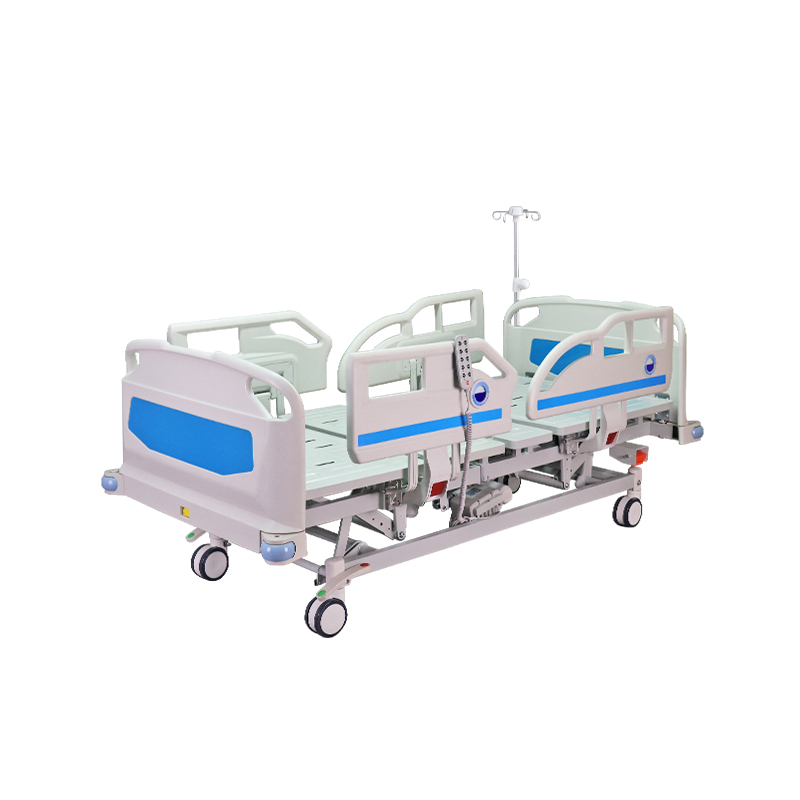

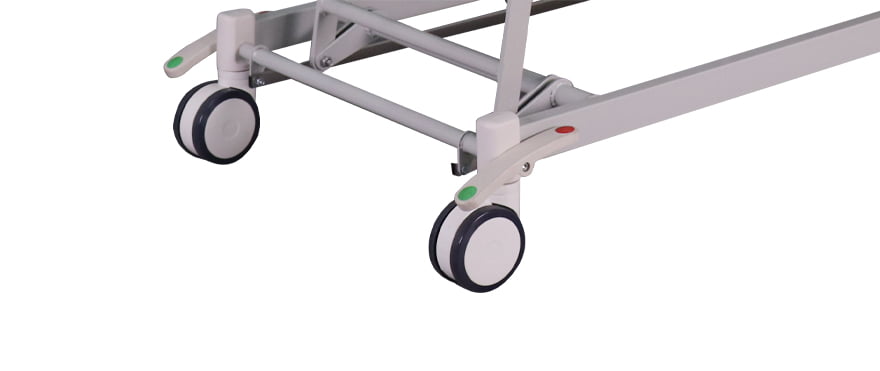
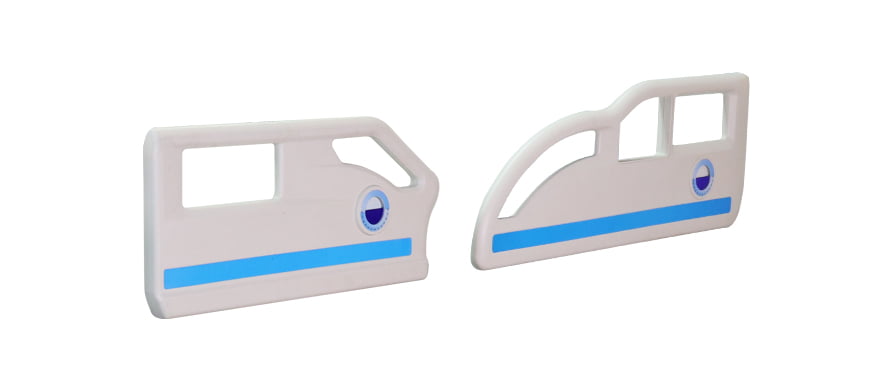
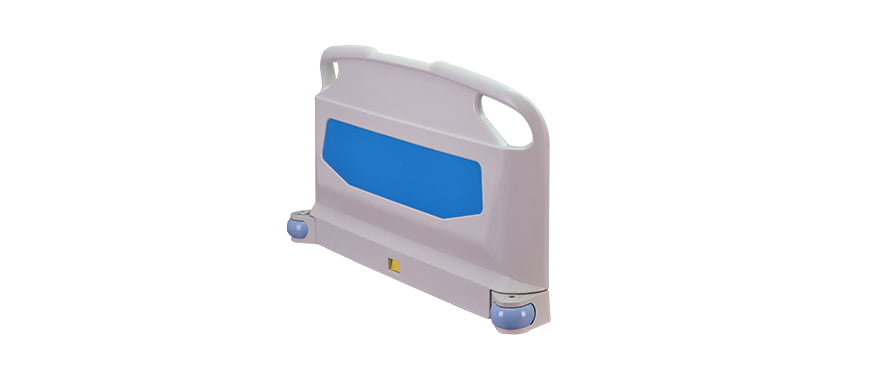
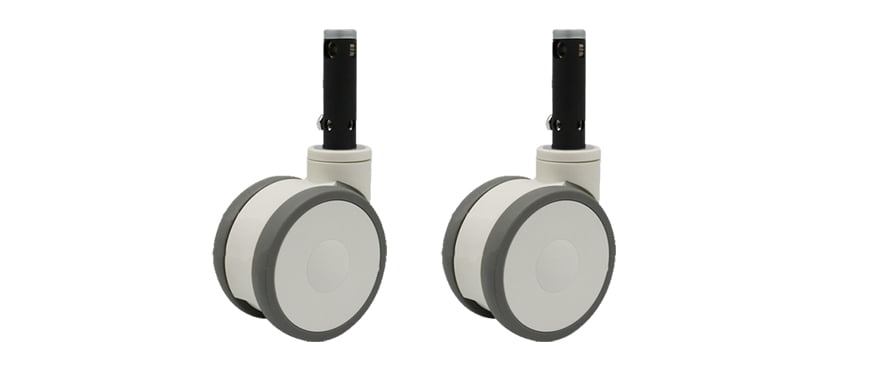
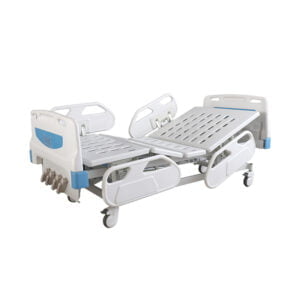
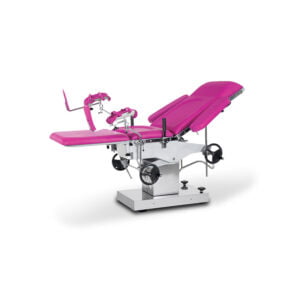
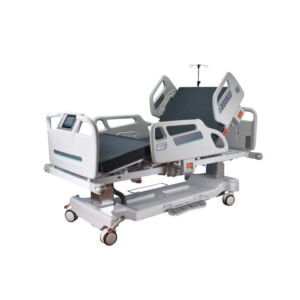
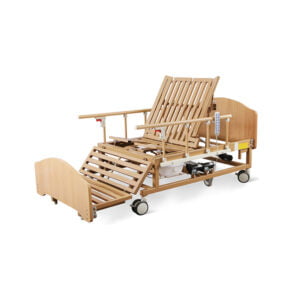

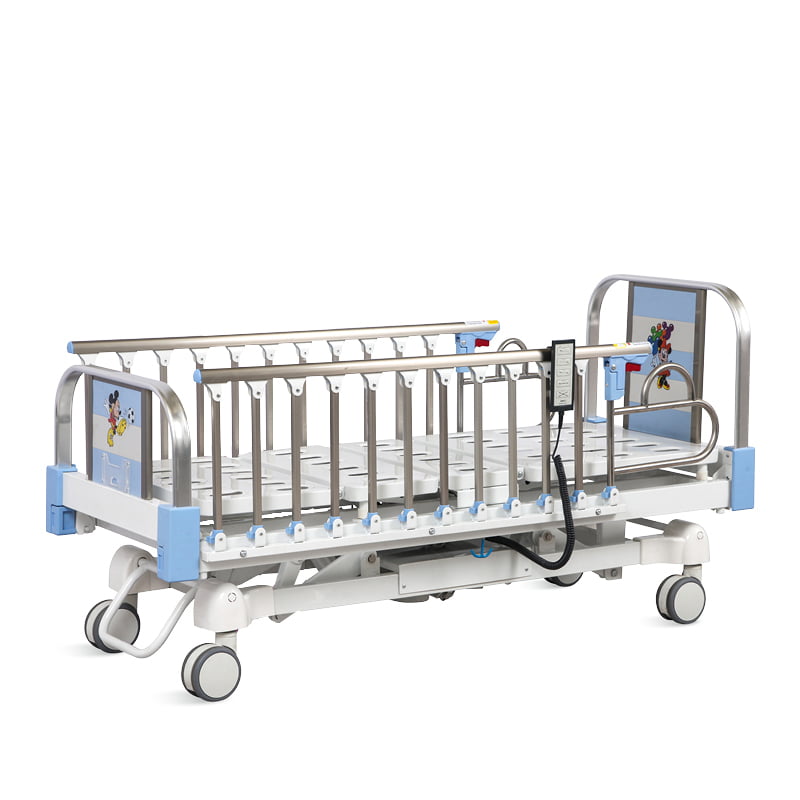
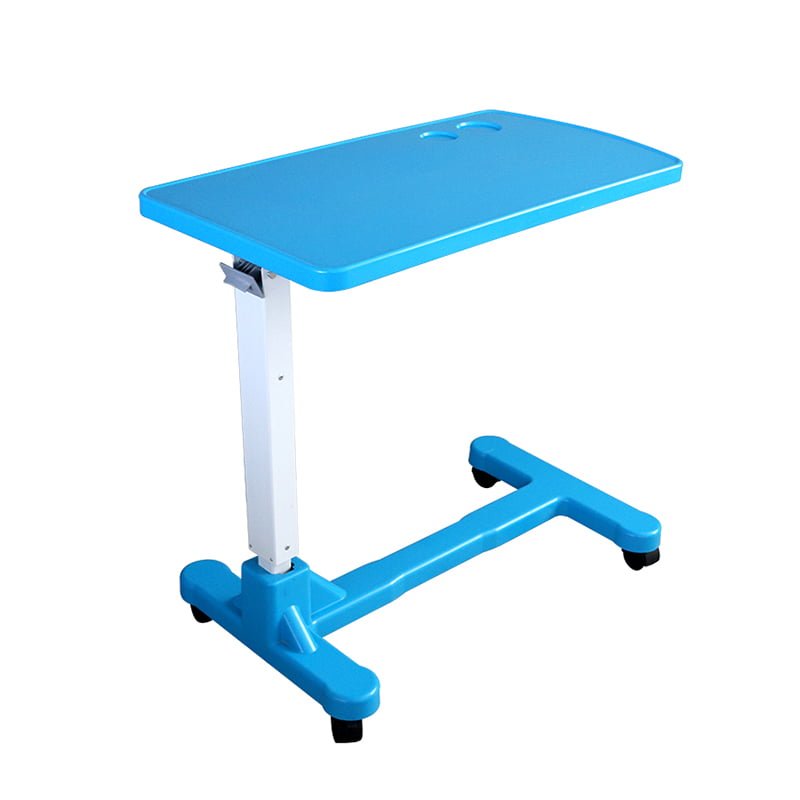
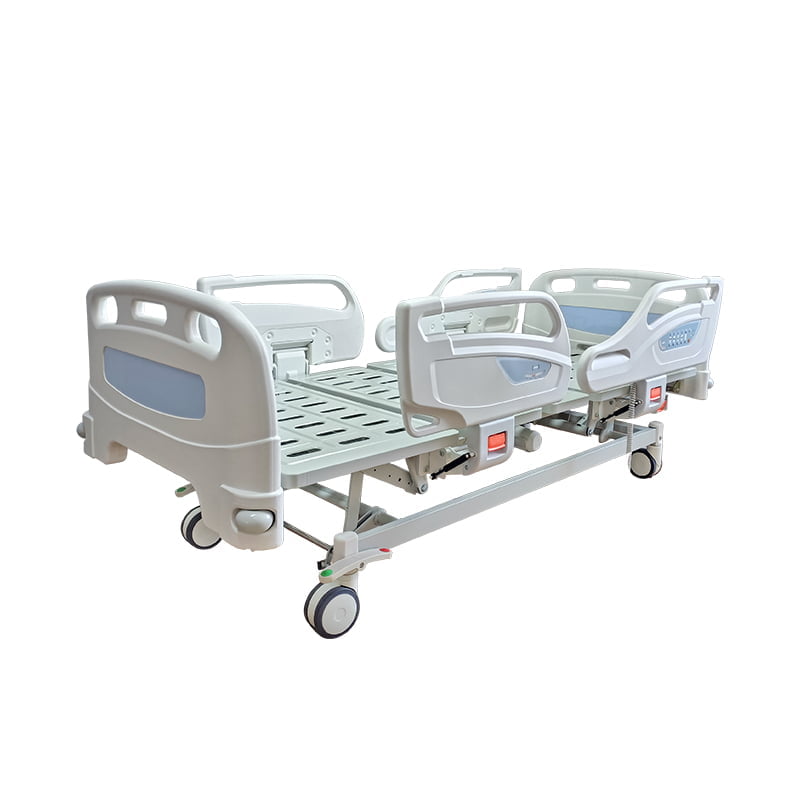
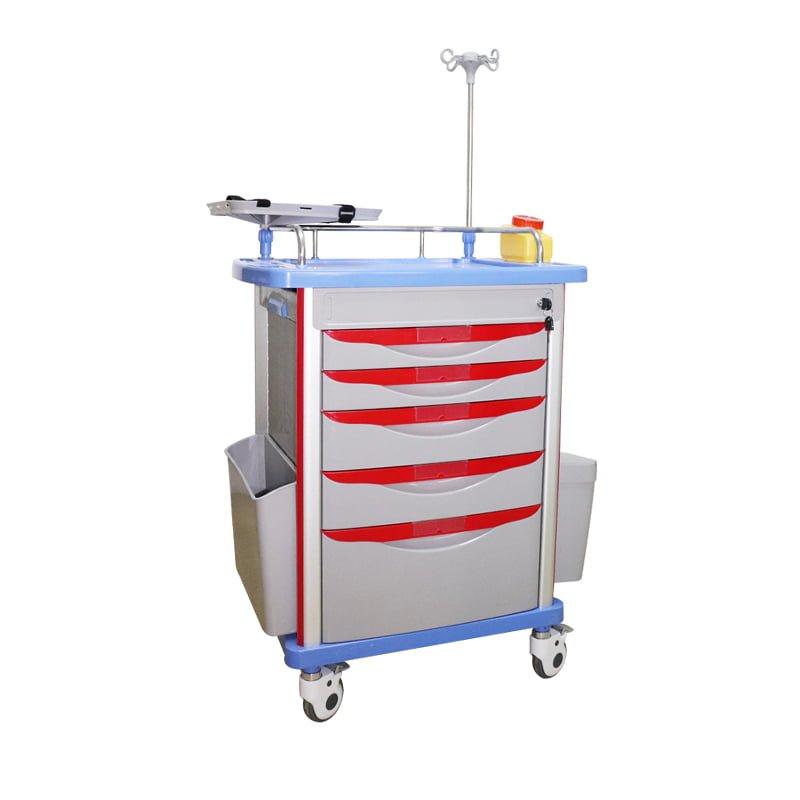
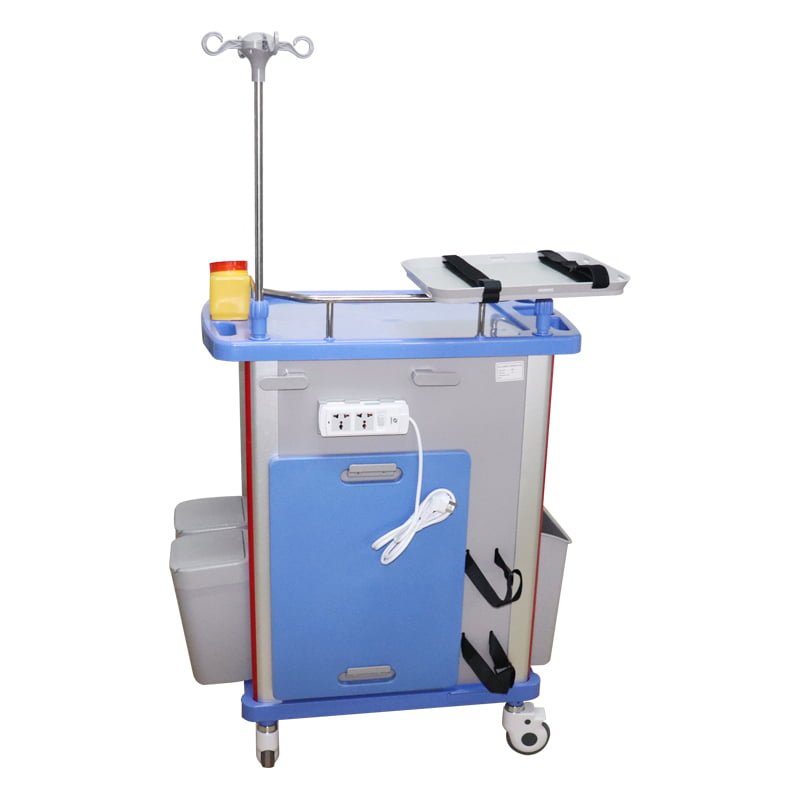
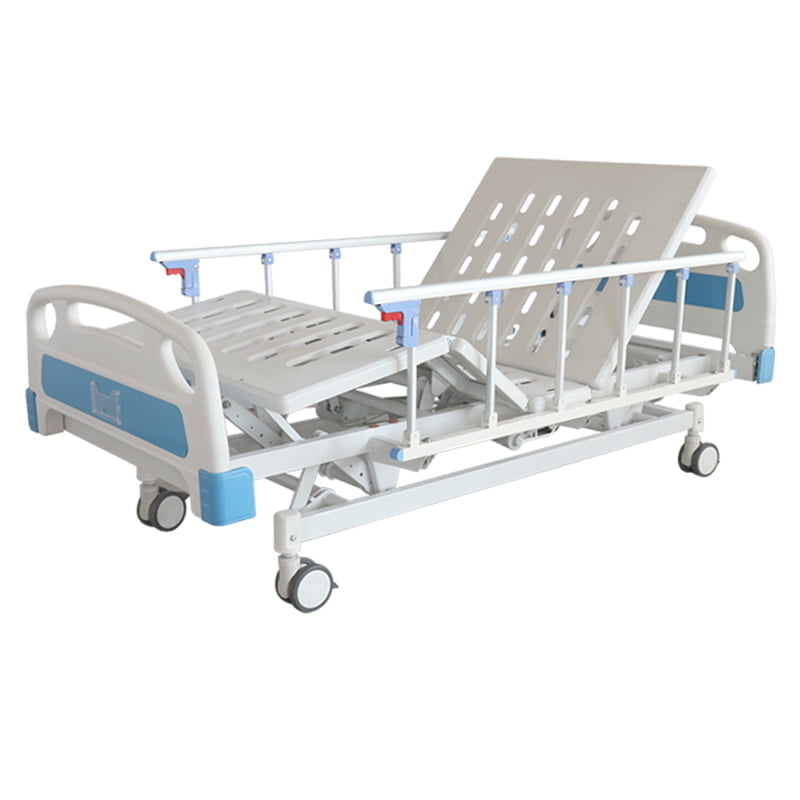
Reviews
There are no reviews yet.